
Last year I came across these beautiful Indian purple emperors (Mimathyma ambica) at the, now famous site, for viewing mud puddling butterflies in northern Thailand. There is something about the sandy soil at this site in Chiang Dao, which attracts many butterflies from the surrounding forest. It is almost entirely males of each species which go mud puddling, searching for salts, nitrogen and other essential minerals lacking from their diet, to help them produce a spermatophore, needed for mating. One of the most attractive butterflies at the site on the day I visited (29 Oct 19) was the Indian purple emperor (below).

It does not take long to work out that the beautiful blue iridescence is only visible from a certain angle. The iridescence is clearly visible when standing in front of the butterfly, and looking down on it, but disappears completely when you walk around behind it (below). Just to emphasize, this is the same individual butterfly! Photographed from a different angle.
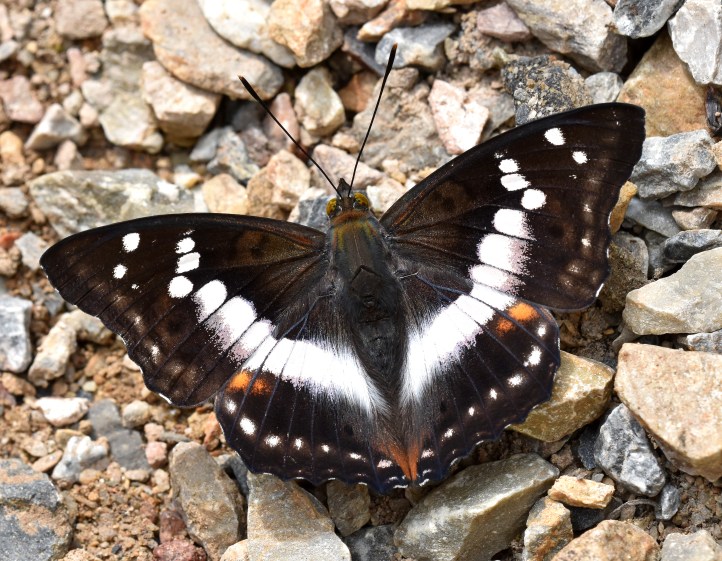
We know from scientific studies carried out on European purple emperors – Apatura spp., like Apatura iris (below) – by Serbian researchers Dejan Pantelić, Srećko Ćurčić and others, that brilliant violet-blue iridescent colours produced on the dorsal wing surfaces of males are only visible within a very narrow (18°) angular range (Pantelić et a., 2011). The same almost certainly applies to the Indian purple emperor, although whether the angle is exactly the same, remains to be discovered, I think.
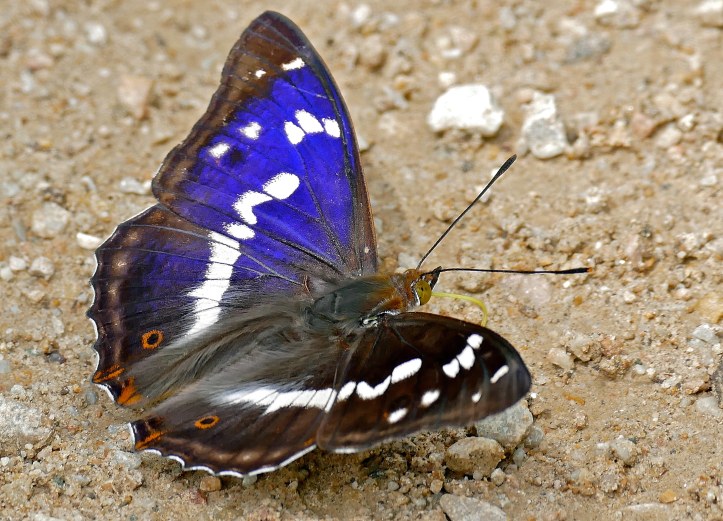
Male purple emperors, Apatura iris (above), and lesser purple emperors, A. Ilia (below), have patches on their wings that generate intensive purple-blue iridescence in the UV region. Nanoarchitecture – microscopic cuticular patterns on the uppermost wing scales – is what produces the blue iridescence seen in these two species, as well as many other purple butterflies in the subfamily Apaturinae (Nymphalidae) I would guess. In the Apatura species, the researchers found that the wing scales are strongly inclined, relative to the wing membrane, and the narrow angle in which the iridescence is visible is a result of the interplay between the inclination of the scales and the microscopic ridges and lamellae on their surfaces (below).
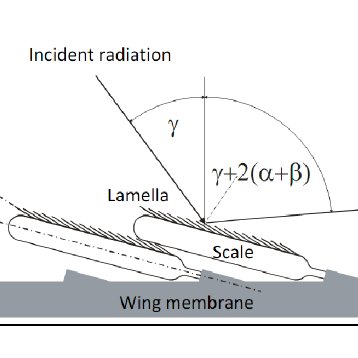
The researchers found that in Apatura spp. butterflies, the iridescence is directed in three different directions. In other words, the iridescence produced in different parts of the wing surface is reflected in different directions (Fig. 10 in Pantelić et al., 2011). So for example, the iridescence reflected off the hindwings is directed forwards, which – assuming that it is the same in Indian purple emperor – is why I was able to walk around the other side of the puddling butterfly (see image below) and get a shot of the iridescence.

The iridescence reflected off the forewings is directed more to the sides; which also seems to be the case in the Indian purple emperor (see photo below). What this means is, the butterfly has the ability to direct its gorgeous iridescence in three directions – to the front, side and back – just by changing the angle of its wings! Now that’s clever!
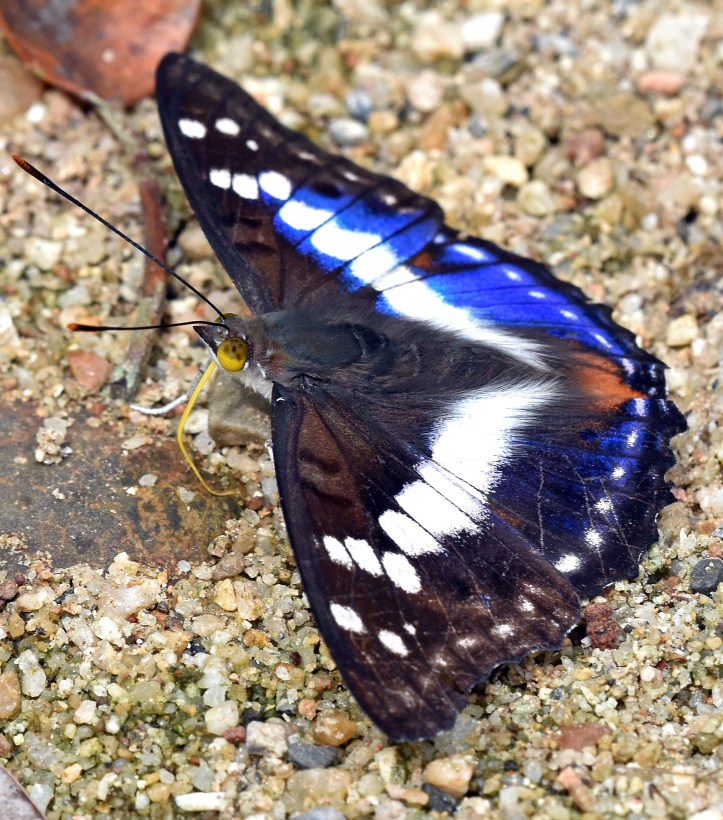
Another interesting property of this restricted angular iridescence, is that during flight the colour of the dorsal (upper) sides of their wings changes dramatically – from from violet-blue to brownish in most species – as they flap their wings. The iridescence also changes with angle of viewing in the Lesser purple emperor (Apatura ilia), see below (taken from the Wikipedia site for this species).

For more on iridescence and courtship and mating in butterflies, see Cannon (2019).
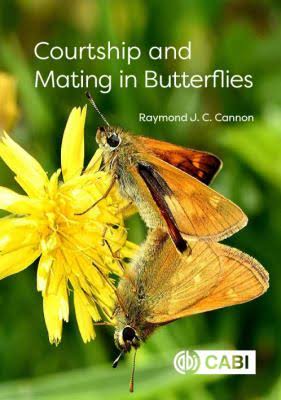
Links
https://www.cabi.org/bookshop/book/9781789242638/
https://www.nhbs.com/courtship-and-mating-in-butterflies-book
https://www.atroposbooks.co.uk/courtship-and-mating-in-butterflies
References
Cannon, R.J.C. (2019). Courtship and mating in butterflies. Hardback | 392 Pages | 9781789242638
Pantelić, D., Ćurčić, S., Savić-Šević, S., Korać, A., Kovačević, A., Ćurčić, B., & Bokić, B. (2011). High angular and spectral selectivity of purple emperor (Lepidoptera: Apatura iris and A. ilia) butterfly wings. Optics express, 19(7), 5817-5826.
Beautiful pics!
Thank you!😊
[…] brilliant violet-blue iridescent colours produced on the dorsal wing surfaces of male emperor butterflies, like the European Purple emperor (Apatura iris), or the Indian purple emperor (Mimathyma ambica) […]